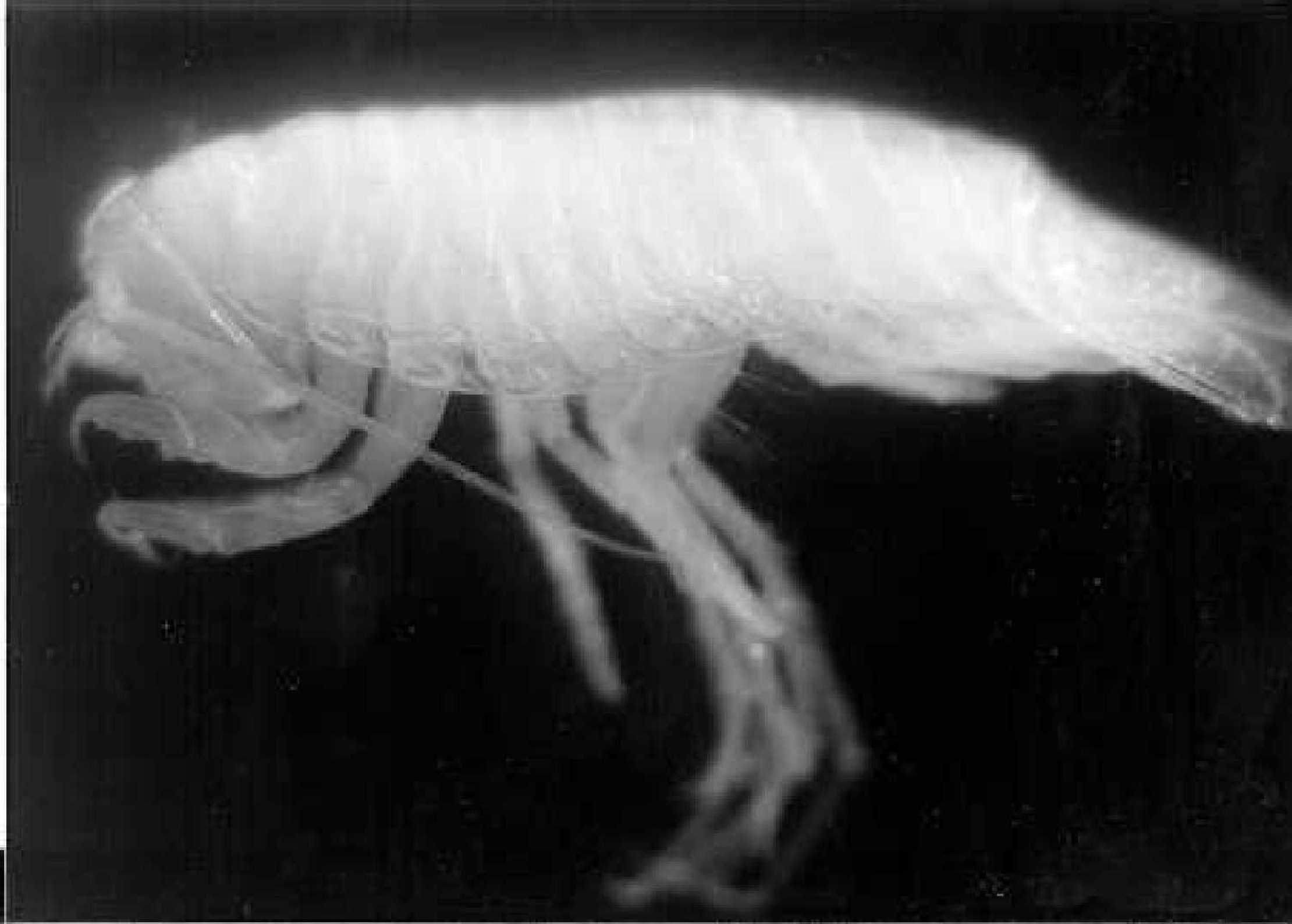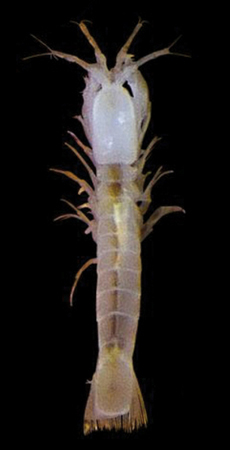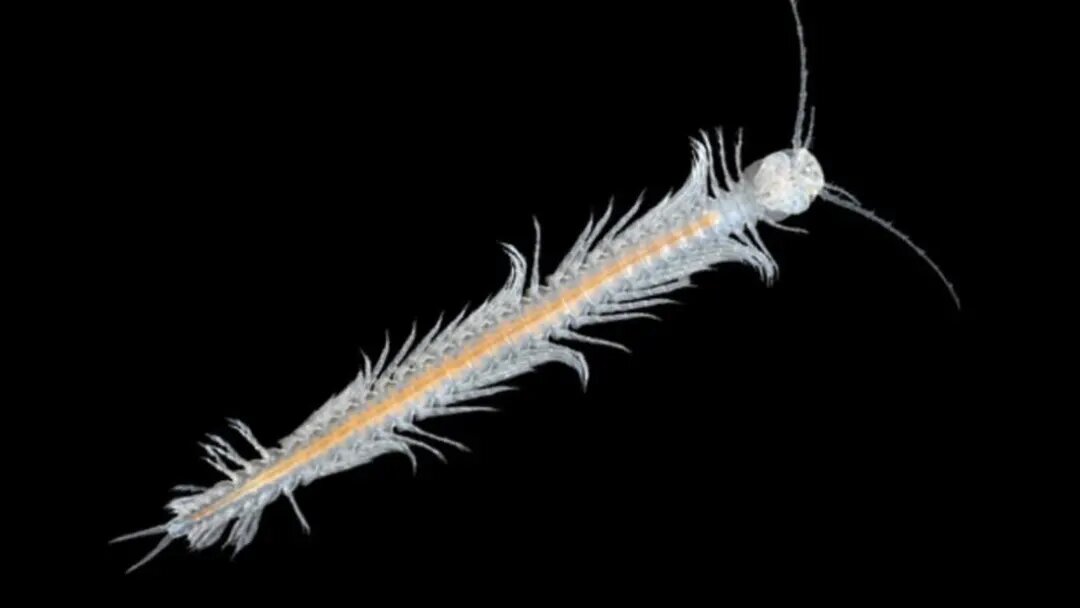|
| |
| Biospeleology: The Study of Cave
Adapted Life |
|
last
updated 17 January, 2023
|
We have included a small
portrait gallery of obligate cave species (Stygobites) that inhabit the anchialine caves of
Quintana Roo. It is our hope that this gallery might assist you in identifying
and appreciating a few of the residents of these caves. Should you
be interested in a short narration on the history of Biospeleology in this region, click
here.
 |
Bahalana
mayana A
small isopod, up to 10 mm in length, that favors a specific
niche between the fresh and salt water zones (the
halocline). This animal is found in the Esqueleto
(Temple of Doom) cave, and occasionally in the
siphon area of the Carwash cave. They are not aggressive
swimmers, displaying a rather calm habit of inspecting the thin
halocline or mixing zone. |
| Photo: J. Carpenter |
|
 |
Creaseriella
anops is a
large isopod, up to 22 mm in length. They are a very common resident
to most caves in the Q. Roo area. This animal can be identified by
its thumbnail size. Note its silt-foraging abilities on the
cave floor and spirited swimming antics. They are very active
creatures. |
| Photo: J. Carpenter |
|
 |
Stygiomysis cokei This
species, up to 21 mm in length, is one of four Stygiomysis
sp. that reside in the underwater caves of Quintana Roo.
These animals do not swim within the water column like the
rest of local anchialine critters. Species of the Stygiomysids are
"crawlers", preferring the floor, walls, and the ceiling
of their cave environment. They are fast crawlers covering a
meter of rock in the blink of your eye. Cave divers often dislodge these
animals from the cave ceiling with their exhaust bubbles and
misidentify the animal as Speleonectes tulumensis
(Remipedia). Look for S. Cokei's square "head" and
its pointed legs trying to grab the water. This will distinguish
this animal from the Speleonectes sp. swimming action with its
"legs". Please do
not disturb these animals. |
| Photo:
Simões, N. |
|
 |
Olgilbia pearsi aka.
Typhliasina
pearsi is one of two
vertebrate cave adapted species in the region. They are
sensitive animals when confronted by cave divers. They are known
to abandon popular cave diving routes for more secluded cave areas.
They are also very sensitive to the amount of dissolved oxygen in the water.
Many researchers consider T. pearsi as an important indicator of the health of the
freshwater aquifer. Please do not disturb these animals. |
| Drawing:
M. Navarro-Mendoza |
|
 |
Speleonectes tulumensis is a relatively new Genus of underwater cave
animal. It is an obligate underwater cave dweller found only in
the caves of the Yucatan Peninsula. There are additional species of Speleonectes.sp.
that are found in other
countries that support anchialine caves.
Also known as Remipedia, or
"little oarsmen", they make their home below the halocline
or the interface between
the fresh and salt water layers. The base salt water zone
contains a miniscule amount of dissolved oxygen. Other underwater cave animals
will suffocate in this low-oxygen environment. It appears as
though Speleonectes tulumensis has few if any natural
predators.
Speleonectes tulumensis is
armed with what we believe to be a "stinger" connected to a
venom gland. This venom injection system may be used to stun the
prey it hunts.
Please do not disturb these or
other cave animals. |
|
Photo: Science
360.gov |
|
| |
|
|
Conservation of Caves and Cave Adapted Animals is Vital |
|
Please
do not attempt to collect biological or geological specimens within any
dry or underwater cave. Sampling of cave life or cave materials must be supervised directly by
a speleologist who is familiar with and licensed to collect biological
or physical samples from the natural environment of the cave. Your actions, if not directly supervised,
will ultimately contribute to unnecessary damage to the cave and its
life.
Follow
this link if you are concerned about the
growing problem of underwater cave incursions by Astyanax mexicanus
and declining Troglobitic populations in Quintana Roo caves.
|
Updates and corrections are welcome: chac<at>consolidated.net
© QRSS, 2000-2025
|
